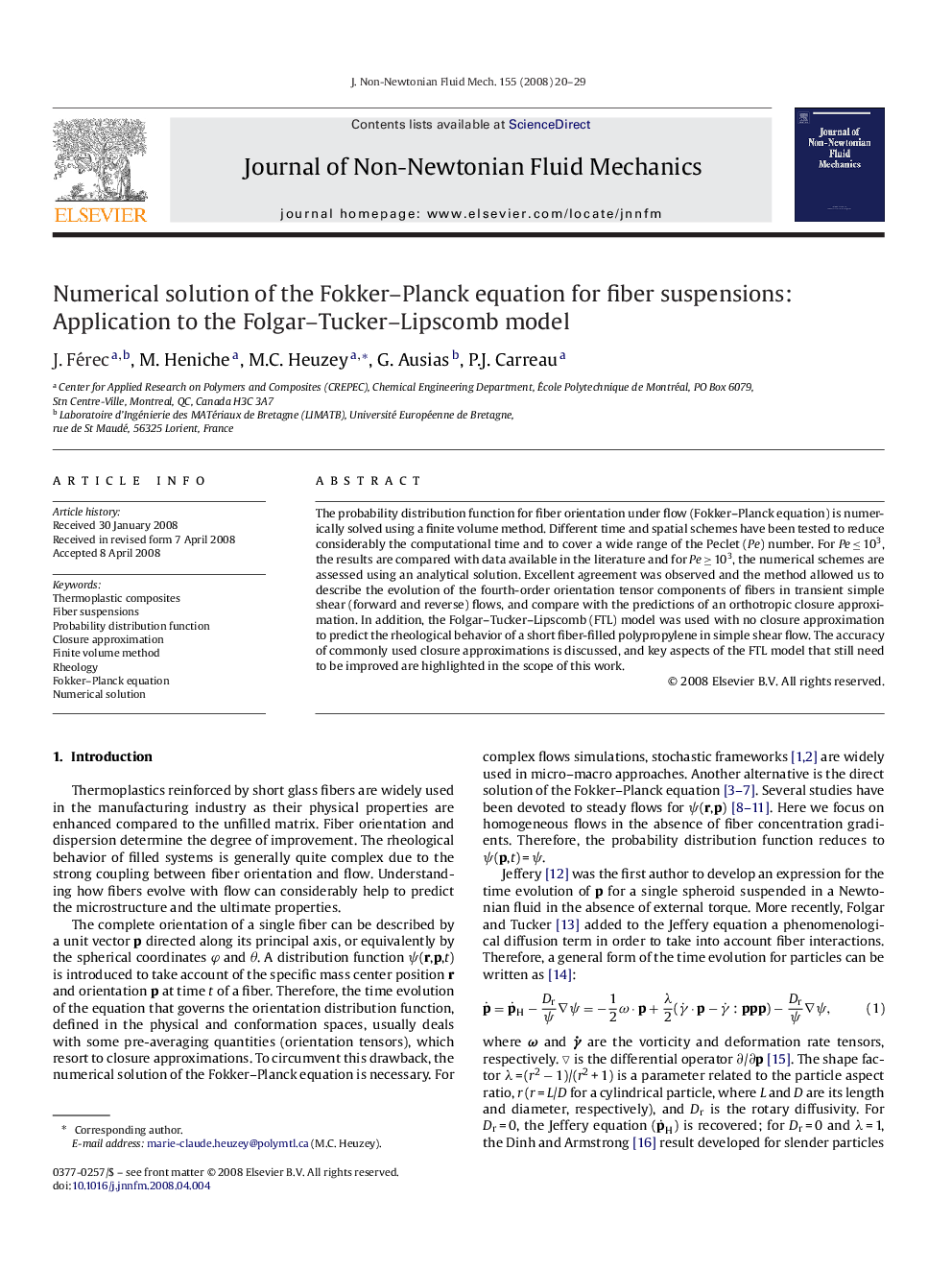| کد مقاله | کد نشریه | سال انتشار | مقاله انگلیسی | نسخه تمام متن |
|---|---|---|---|---|
| 671335 | 1459093 | 2008 | 10 صفحه PDF | دانلود رایگان |

The probability distribution function for fiber orientation under flow (Fokker–Planck equation) is numerically solved using a finite volume method. Different time and spatial schemes have been tested to reduce considerably the computational time and to cover a wide range of the Peclet (Pe) number. For Pe ≤ 103, the results are compared with data available in the literature and for Pe ≥ 103, the numerical schemes are assessed using an analytical solution. Excellent agreement was observed and the method allowed us to describe the evolution of the fourth-order orientation tensor components of fibers in transient simple shear (forward and reverse) flows, and compare with the predictions of an orthotropic closure approximation. In addition, the Folgar–Tucker–Lipscomb (FTL) model was used with no closure approximation to predict the rheological behavior of a short fiber-filled polypropylene in simple shear flow. The accuracy of commonly used closure approximations is discussed, and key aspects of the FTL model that still need to be improved are highlighted in the scope of this work.
Journal: Journal of Non-Newtonian Fluid Mechanics - Volume 155, Issues 1–2, November 2008, Pages 20–29